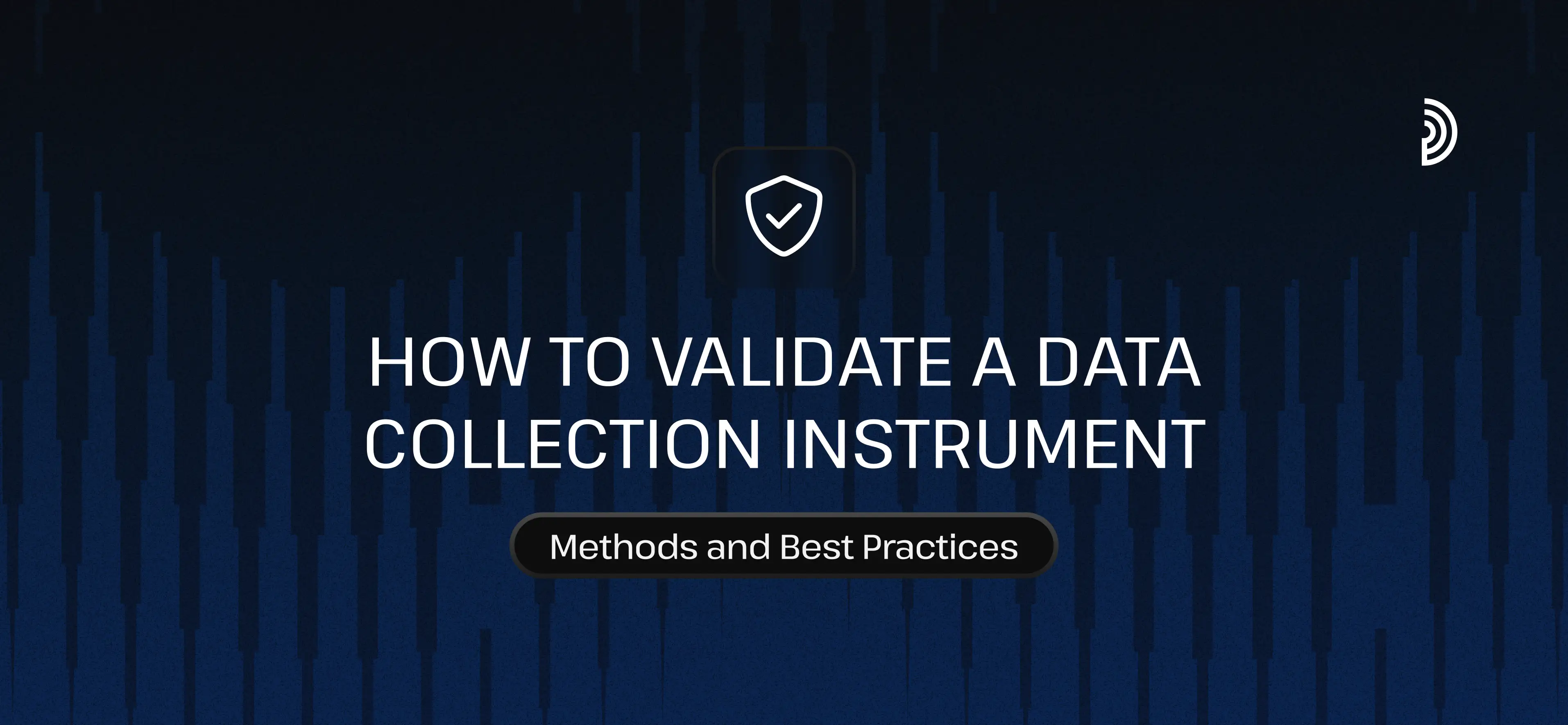Wpływ słabej jakości danych na decyzje biznesowe i jak temu zapobiec
16 sie 2024
|
5
min. czyt.
Zła jakość danych często pozostaje niezauważona, dopóki nie przekształci się w błędne analizy, niewłaściwe strategie i ostatecznie utracone szanse. Doświadczony menedżer ds. produktów danych nawet krytykował zespoły ds. danych za to, że zawsze je ignorowały i przesuwały, dopóki nie wydarzyło się coś katastrofalnego, w swoim zeznaniu na temat tego, jak digna pomogła jego magazynowi danych rozwiązać ich codzienne problemy z jakością danych. Zła jakość danych może prowadzić do znacznych szkód w różnych sektorach, od opieki zdrowotnej po bankowość, ubezpieczenia, telekomunikację i farmaceutyki. Kiedy nieścisłości, niespójności i niekompletność wnikają w twoje dane, to tak, jakby wstrzykiwać truciznę do żył twojej organizacji.
Zrozumienie i poprawa jakości danych to nie tylko techniczna konieczność, ale także strategiczny imperatyw. Ten artykuł bada, co stanowi złe dane, ich wpływ na różne branże oraz kroki, jakie możesz podjąć, aby zapewnić, że twoje dane wspierają, a nie utrudniają twojej decyzje biznesowe.
Co to są Złe Dane?
Złe dane odnoszą się do informacji, które są nieścisłe, niekompletne, zduplikowane, przestarzałe lub niespójne. Może to wynikać z kilku powodów, takich jak błąd ludzki podczas wprowadzania danych, brak właściwego Data Governance lub problemy z integracją między systemami. Złe dane przejawiają się w różnych formach:
Nieścisłe Dane: Błędy w danych, które nie odzwierciedlają prawdziwych wartości.
Niekompletne Dane: Brakujące pola danych, które uniemożliwiają pełne zrozumienie zestawu danych.
Niespójne Dane: Rozbieżności między różnymi zestawami danych, które powinny być zgodne.
Przestarzałe Dane: Informacje, które już nie są aktualne lub istotne.
Zduplikowane Dane: Ta sama wartość danych lub kolumna pojawiająca się więcej niż raz w tym samym zestawie danych.
Wpływ Złej Jakości Danych na Różne Branże
Konsekwencje złych danych są dalekosiężne, szczególnie w sektorach takich jak opieka zdrowotna, bankowość, ubezpieczenia, telekomunikacja i farmaceutyka.
Złe Dane w Opiece Zdrowotnej
W branży opieki zdrowotnej, nieścisłe dane mogą prowadzić do błędnych diagnoz i niewłaściwych leczeń, co ostatecznie zagraża bezpieczeństwu pacjentów. Na przykład, nieścisłe dane pacjenta mogą prowadzić do podania niewłaściwego leku lub dawki, co ma poważne konsekwencje dla zdrowia pacjenta. Ponadto, złe dane mogą zwiększać koszty opieki zdrowotnej z powodu błędów fakturowania i nieefektywności w opiece nad pacjentem.
Złe Dane w Bankowości
Dla sektora bankowego integralność danych jest kluczowa dla oceny ryzyka i zgodności z przepisami. Nieścisłe dane mogą prowadzić do błędnych ocen ryzyka, oszukańczych transakcji, nieprawidłowych ocen kredytowych i przegapienia okazji inwestycyjnych, co skutkuje niepożądanymi ekspozycjami lub brakiem zgodności z krytycznymi regulacjami finansowymi.
Złe Dane w Ubezpieczeniach
Dla firm ubezpieczeniowych złe dane mogą zniekształcać oceny ryzyka, prowadząc do nieprawidłowego ustalania cen polis i zwiększenia odrzuceń roszczeń. To nie tylko wpływa na wynik finansowy, ale także podważa zaufanie klientów.
Złe Dane w Telekomunikacji
Firmy telekomunikacyjne w dużej mierze polegają na danych w zarządzaniu relacjami z klientami i optymalizacji sieci. Zła jakość danych tutaj może prowadzić do odpływu klientów, nieskutecznych strategii marketingowych i kiepskiej jakości usług.
Złe Dane w Farmaceutyce
Dla sektora farmaceutycznego integralność danych wpływa na wszystko, od badań i rozwoju leków po zgodność z przepisami i bezpieczeństwo pacjentów. Nieścisłe dane kliniczne mogą opóźnić lub zatrzymać zatwierdzenie nowych leków, co ma znaczny wpływ na zdrowie pacjentów, dochody firmy i reputację.
Jak Złe Dane Wpływają na Podejmowanie Decyzji Biznesowych
Zła jakość danych wpływa na procesy podejmowania decyzji biznesowych przez:
Wprowadzająca w Błąd Analiza: Błędne dane prowadzą do błędnych wniosków, co skutkuje błędami strategicznymi.
Marnowanie Zasobów: Firmy mogą inwestować czas i pieniądze w rozwiązywanie problemów, które nie istnieją, lub przegapiać okazje, które nie były widoczne z powodu błędnych danych.
Obniżona Wydajność: Złe dane spowalniają procesy i zwiększają obciążenie, ponieważ pracownicy spędzają czas na weryfikacji i czyszczeniu danych.
Utrata Przewagi Konkurencyjnej: Bez dokładnych danych, firmy nie mogą skutecznie reagować na zmiany na rynku ani wprowadzać innowacji, aby sprostać potrzebom klientów.
Kroki do Poprawy Jakości Danych Biznesowych
Antidotum na złe dane to proaktywne podejście do zarządzania jakością danych. W naszym poprzednim artykule podzieliliśmy się kompleksowym przewodnikiem, jak zapewnić jakość danych przez ekspertów z digna. Oto jednak kilka podstawowych kroków:
1. Rozpocznij od Oceny Jakości Danych
Zanim poprawisz jakość danych, oceń, gdzie obecnie znajduje się twoja organizacja. Polega to na identyfikacji problemów z jakością danych i określeniu ich źródeł. Używaj narzędzi do profilowania danych i wyróżniania obszarów wymagających poprawy.
2. Ustanów Standardy Jakości Danych
Zdefiniuj, co stanowi o wysokiej jakości danych dla twojej organizacji. Te standardy powinny obejmować dokładność, kompletność, spójność i aktualność. Przekaż te standardy wszystkim zaangażowanym w obsługę danych.
3. Używaj Narzędzi do Profilowania Danych
Wykorzystuj narzędzia do profilowania danych, aby identyfikować problemy, takie jak brakujące lub niespójne dane, zduplikowane rekordy i nieprawidłowe wartości. To pomaga utrzymać wysokie standardy jakości danych w całej organizacji.
4. Wdroż Zasady Walidacji Danych
Ustaw zasady, które zapewniają, że dane wprowadzane do systemów spełniają ustalone standardy jakości. Zautomatyzowane procesy walidacji mogą zminimalizować błędy ludzkie i usprawnić zbieranie danych. Dzięki narzędziom takim jak digna nie musisz ustawiać zasad walidacji danych, ponieważ rozpoznaje je z przeszłości.
5. Regularnie Przeprowadzaj Czyszczenie Danych
Regularnie audytuj swoje bazy danych, aby zidentyfikować i poprawić nieścisłości. Ten ciągły proces zapobiega nagromadzeniu złych danych w czasie.
6. Szkol Pracowników w Najlepszych Praktykach Zarządzania Jakością Danych
Edukacja zespołu na temat znaczenia jakości danych i zapewnianie szkoleń, jak ją utrzymać, pomaga stworzyć kulturę odpowiedzialności i precyzji w obsłudze danych.
7. Wdroż Politykę Data Governance
Ustanów jasne zasady określające, jak dane mają być zarządzane, utrzymywane i dostępne. Zapewnia to, że dane pozostają wiarygodne i bezpieczne w czasie.
digna: Twoje Rozwiązanie Zapewniające Jakość Danych
Rozwiązania digna w zakresie jakości danych oferują kompleksowe podejście do zwalczania złych danych. Nasza platforma wykracza poza tradycyjne czyszczenie i walidację danych, oferując zaawansowane analizy i wglądy zasilane sztuczną inteligencją. Dzięki digna możesz:
Proaktywnie Identyfikować Problemy: Nasza funkcja Autometrics nieustannie profiluje twoje dane pod kątem anomalii, zapewniając uchwycenie i analizę wszystkich metryk dla maksymalnej dokładności.
Przewiduj Trendy Danych: Nasz model prognozujący korzysta z uczenia maszynowego, aby przewidzieć przyszłe zachowanie danych, pomagając ci wyprzedzać wyzwania związane z jakością danych.
Optymalizuj Progi Jakości Danych: Nasza funkcja Autothresholds automatycznie dostosowuje progi jakości danych na podstawie wzorców danych, zapewniając optymalną wydajność.
Alarmuj o Anomaliach Danych: Nasz intuicyjny pulpit nawigacyjny i powiadomienia dostarczają wglądów w czasie rzeczywistym i ostrzegają o potencjalnych problemach, zanim się one nasilą.
Podjęcie Działań Już Dziś
Nie pozwól, aby złe dane podważyły twoje decyzje biznesowe. Zarezerwuj demo z digna już dziś i odkryj, jak nasze narzędzie do Data Observability i jakości może wzmocnić twoją organizację, aby w pełni wykorzystać potencjał dokładnych, niezawodnych danych. Dołącz do nas w przekształcaniu wyzwań związanych z danymi w możliwości biznesowe.




